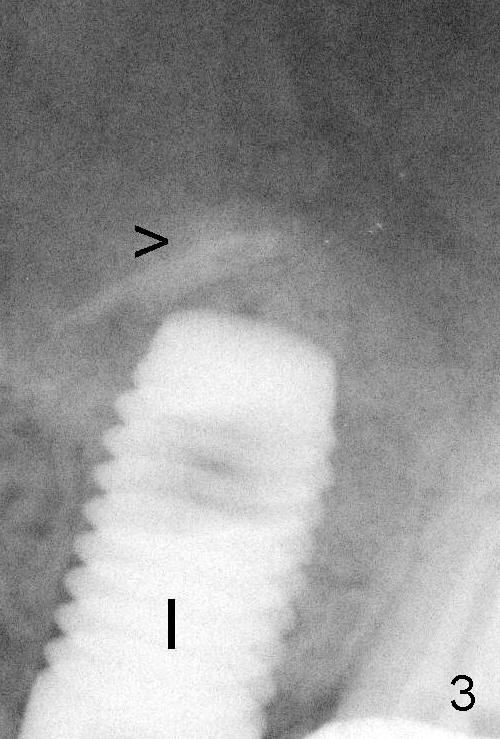
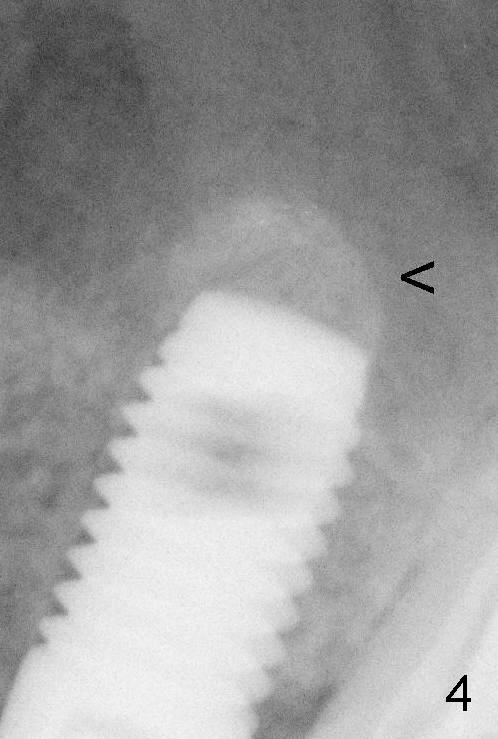
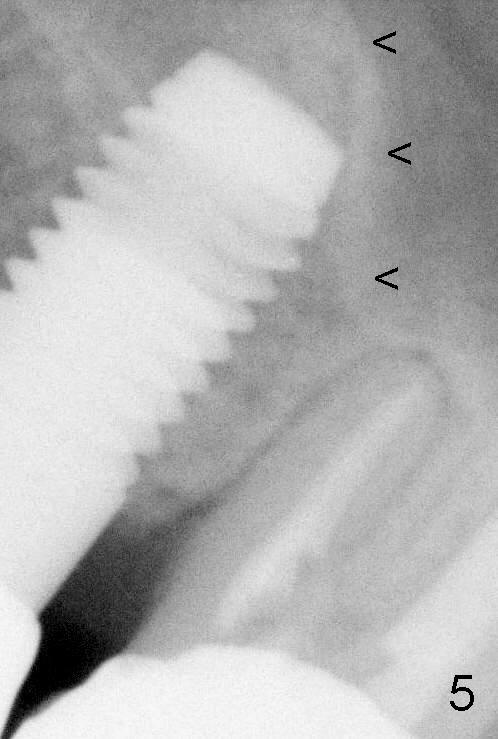
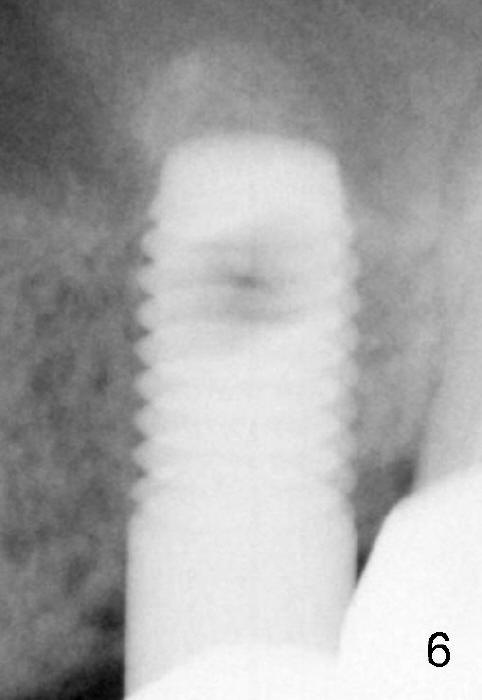
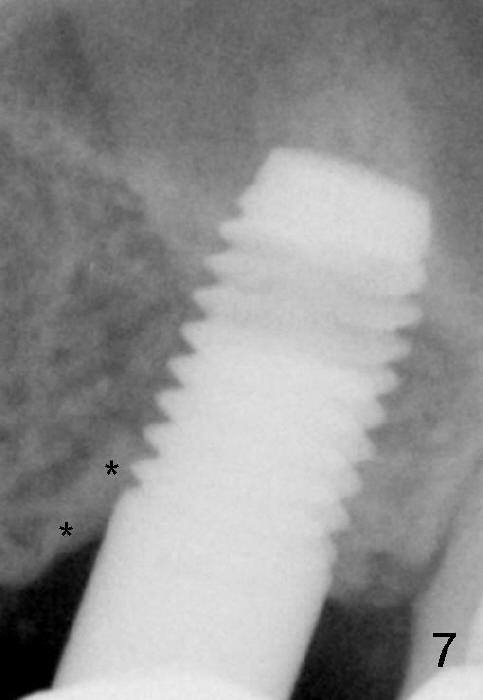
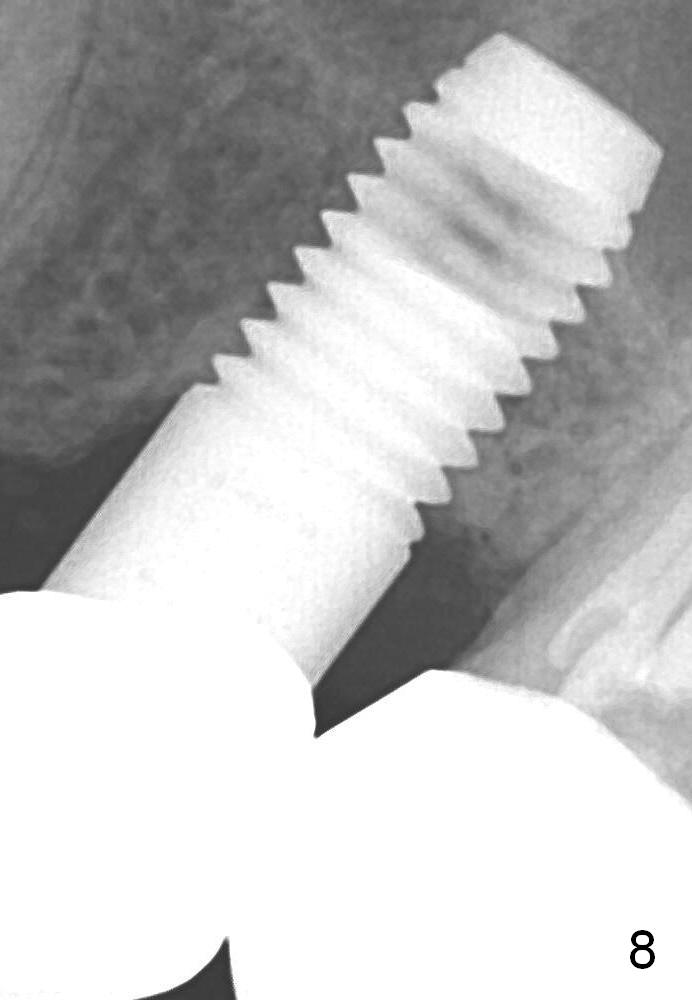
 |
 |
 |
 |
 |
 |
A 5x14 mm cylindrical implant (Fig.3 I) was inserted with elevation of the apparent sinus floor (>, no allograft used in case of sinus infection). Seven months postop, the density of sinus floor increases (Fig.4 <). The implant is stable and processed for crown (Fig.5 C, different view of the lifted sinus floor (<)). While sinus floor density is decreasing, the mesial and distal bone density is increasing 6 months (Fig.6), 1 year 6 months (Fig.7) and 3 year 6 months (Fig.8) post cementa-tion.
It appears necessary to engage an implant into the sinus floor for primary stability for a skinny, probably osteo-porotic female patient. The shape and diameter of the implant are also critical.
Xin Wei, DDS, PhD, MS 1st edition 07/19/2013, last revision 12/18/2016